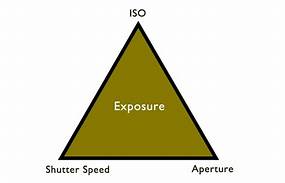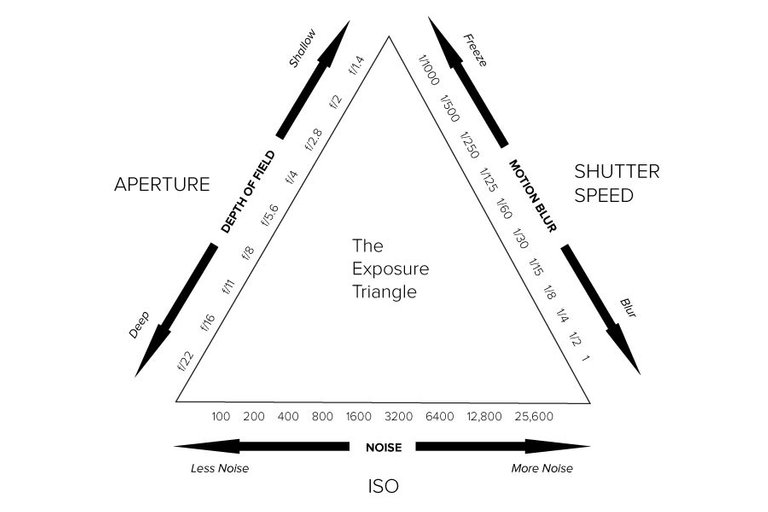
Simple, Right?
Today I am going to do my best to explain what is commonly known as the "Exposure Triangle," and how it is used in photography. In the above graphic, you can see a simplified exposure triangle, but there is not much as far as explanation here. It does however, show you the basics of how the three areas of ISO, Shutter Speed, and Aperture interact.
Huh?
For those that do not know, ISO stands for the International Standards Organization and is the standardized industry scale for measuring sensitivity to light. This is used to describe how sensitive your camera's sensor is to light. Shutter speed is just what it sounds like, how fast the shutter on your camera opens and closes. Aperture describes how large the opening is to let light into the camera. Simple, right? Maybe not so much, let me use another graphic that is a bit more helpful in describing things...

That's a little better...
Its All Relative...
Shooting good photos requires you to understand the relationships between the three aspects of the exposure triangle. One thing that always confused me when I was learning this is that when it comes to "F-Stops" or focal stops, the smaller the number, the larger the aperture hole is to let in light. Backwards, right? After you get that part down, the rest is pretty easy, in my opinion. Regarding shutter speed, it makes sense that the faster the shutter opens and closes, the faster the photo is taken. Therefore, a faster shutter speed is better for capturing motion versus having a blurry photo. When it comes to ISO, the more you are using, the more "noise" you will have in the photo. Think "grainy" images, and you will have an idea of what a high ISO number gets you. Depth of field is how much of the subject will be in focus when the photo is taken. A shallow DOF would have the subject in focus, while the background is blurry, while a deep DOF would have almost everything in focus at the same time.
Experiment!
Like everything in photography, learning the exposure triangle will be trail and error. Go out and take some shots and experiment. Do not wait until you have a paid gig to learn this! Go out, have fun, and learn how to use the exposure triangle to take the shots you want, the way you want them! And, as always...
Thank You For Reading!
Photo Credit
Photo Credit 2

